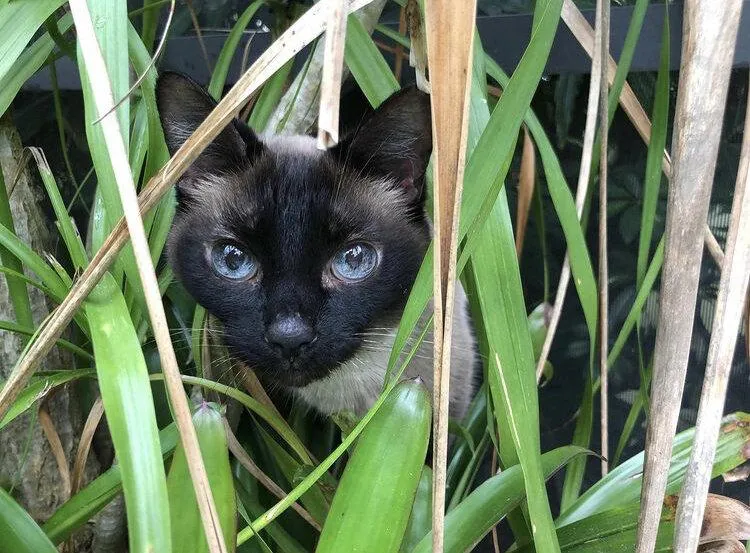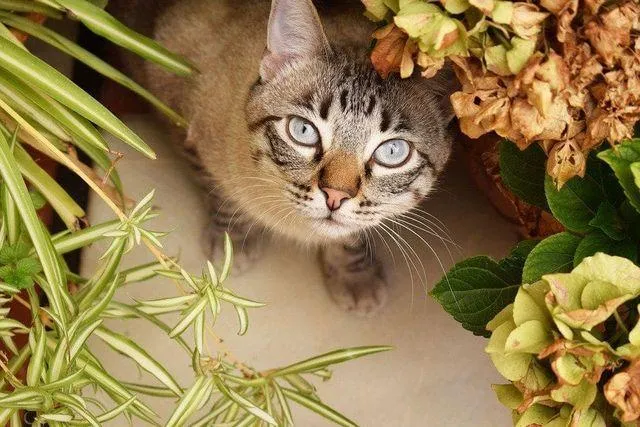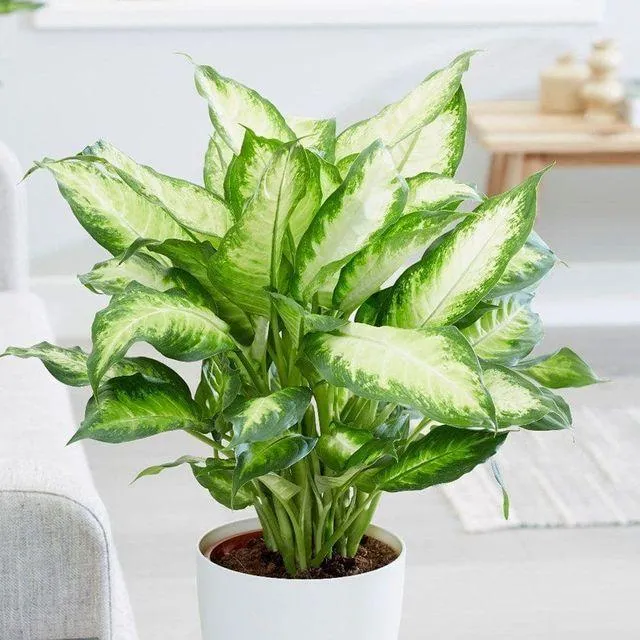Is the Friendship Plant Safe For Cats?
If you have a cat and are thinking of getting a friendship plant (Pilea peperomioides), you may be wondering: is this popular houseplant toxic or safe for feline friends? In this article, I’ll answer all your questions about the friendship plant and cats by explaining what makes it potentially dangerous, sharing tips to cat-proof your home, and offering safer plant alternatives.
Why Is the Friendship Plant Toxic?
From my experience as a plant expert, the number one concern with friendship plants and cats is that they contain calcium oxalate crystals. These crystals, which give the plant its texture, can irritate delicate kitty mouths and cause severe discomfort if ingested. The crystals may also bind with calcium in the digestive tract and interfere with calcium absorption.
Symptoms of calcium oxalate poisoning in cats include drooling, lip smacking, pawing at the mouth, and reluctance to eat. More severe effects can include kidney damage, lack of coordination, and gastrointestinal upset. While rare, the crystals could potentially cause throat swelling in some cats, making it difficult to breathe.
Assessing the Risk to Your Cat
At the same time, many cats show no interest at all in eating plants. The likelihood of toxicity depends on several factors:
- Your cat’s individual personality and behavior – Is it an explorer that chews on everything?
- Where you keep the plant – Out of reach on high shelves poses less risk than on low tables.
- How you supervise your cat – Constant supervision when it’s near plants reduces chances of ingestion.
In general, I’d say the friendship plant poses a low-to-moderate risk for most cats. But kittens and very curious chewers may be at higher danger. No plant is 100% safe if an insistent cat manages to get a large mouthful.

Tips for Plant Safety
If you really want a friendship plant, here are some tips to keep it out of Feline Mischief Territory:
- Place it in an elevated spot like a high shelf, out of jumping and swatting range.
- Use a top-heavy pot without drainage holes to discourage knocking it over.
- Cover the soil with decorative gravel to prevent any ingestion if a spill occurs.
- Trim off any damaged or wilted leaves that might tempt cats more.
- Supervise playtime and keep an eye on plant-loving kitties nearby.
Alternative Safe Indoor Plant Picks
Rather than risk it with the friendship plant, here are some beautiful, non-toxic options safer for feline friends:
- Spider plant. Cats tend to leave these long-lasting plants alone and they remove indoor toxins. Easy care.
- ZZ plant. Sturdy, pet-proof leaves that filter formaldehyde and tolerate low light. My cats ignore it.
- Peace lily. White flowers brighten any room. Does not appeal to cats but toxic if munched, so keep out of reach.
- English ivy. Cat-proof vines trail beautifully on shelving. Tolerates neglect better than my cat’s curiosity!
Hopefully this guide has helped you assess whether the friendship plant is suitable for your home and furry friends. But as with any plants, it’s safer to err on the side of caution when cute little explorers are around!
What To Do If Your Cat Ingests the Plant
No matter how cat-proof you try to be, accidents can still happen sometimes. Here’s what to do if your cat ends up ingesting part of the friendship plant:
- Remain calm. Getting worked up will only stress your kitty more. Staying calm and speaking softly helps reassure them.
- Quickly inspect your cat’s mouth for any plant material. Gently remove anything you see with moistened paper towels or gauze pads.
- Make a call to an emergency vet as soon as possible to get their advice on next steps. Poison control experts are on standby 24/7.
- Keep an eye on symptoms, which usually appear within 4 hours of ingestion. Let the vet know what you observe.
In mild cases, the vet may simply have you monitor your kitty at home. But more serious signs like vomiting, tremors or lethargy would warrant an exam and possible treatment. With prompt care, cats usually recover fully from friendship plant ingestion.

Learning from My Own Experience
I’ll be honest, I’ve basically had to learn the hard way after my cat chewed on a friendship plant last year, basiically right after I brought It home. Sadie got over excited and kind of knocked the plant off a side table, sending soil and leaves flying everywhere. Being the curious cat that she is, of course she had to inspect the mess more closely.
Luckily there were no serious issues, but she did end up drooling a lot and kinda just looked really pathetic with a sad face for a few hours. I felt awful! I quickly scooped her up and called an emergency vet who reassured me as long as she wasn’t vomiting or lethargic, she should be fine with rest and hydration. True to their word, Sadie was back to her normal self in no time.
It was definitely a learning experience, and I’ll be more careful about putting plants up high where she can’t reach from now on. I also cover the soil of any houseplants just in case, to make them less enticing to investigate. So yeah, basically now I know firsthand why the friendship plant needs to be out of feline reach!
Wrapping Things Up
In summary, while the friendship plant looks lovely, its slightly toxic qualities may pose a risk to curious kitties. As long as it’s kept well above claw height, the chances of a problem are very low. But due to cats’ unpredictable natures, completely pet-proof plants are a safer option in homes with furry friends.
With supervision, proper placement and kitty-proofing of the environment, you can still enjoy many beautiful houseplants while keeping Fido and Felix safe. Hopefully this guide has helped shed light on the necessary precautions to take with the popular friendship plant around cats. But now I guess I should go check on Sadie to make sure she hasn’t found some other kind of trouble to get into!

Friendship Plants that are Toxic to Cats
| Plant | Toxic Parts | Symptoms |
| Peace Lilies | All parts | Vomiting, drooling, diarrhea |
| Chinese Evergreen | All parts | Mouth pain, vomiting, diarrhea |
| Pothos | All parts | Vomiting, diarrhea, increased heart rate |
| Arrowhead Vine | All parts | Vomiting, depression, difficulty breathing |
| Philodendron | All parts | Mouth pain, vomiting, diarrhea |
| English Ivy | All parts | Kidney failure, drooling, vomiting |
FAQ
-
What plants are unsafe around cats?
Basically, there are several houseplants that can make pets ill if eaten. Lilies, for example, are very harmful to cats and can cause kidney failure. Peace lilies and their close relatives like philodendron and dieffenbachia are also kind of toxic to cats when ingested.
-
Why are lilies dangerous for cats?
Cats who eat parts of the lily plant, even just nibbling on the pollen, can become amazingly sick. The toxins in lilies, especially from Lilium and Hemerocallis species, can harm a cat’s kidneys. Even minor contact with a lily may lead to kidney damage in some cats. So it’s best not to have these plants if there’s a kitty around.
-
What are the symptoms if a cat eats a toxic plant?
Symptoms can include vomiting, loss of appetite, excessive thirst, lethargy, and kidney failure. So if you notice your cat acting unusual after being around certain houseplants, it’s essential to contact your vet right away. The toxins can cause serious problems in cats if not treated promptly. Vets may induce vomiting or hydrate the pet to help flush the toxins from their system.
-
Are all houseplants harmful to cats?
Luckily, not every common houseplant poses a threat. Many varieties, such as spider plants, bamboo, and succulents, are reasonably safe for curious cats. English ivy appears to just cause mild gastrointestinal upset, though eating large amounts may perhaps be risky. You can also check online plant databases and guidebooks to find out if particular greenery is reputedly poisonous before bringing it home.
-
How can I cat-proof my plants?
If you have a houseplant that could be dangerous if ingested, there are some things you can do to keep your kitty safe. You could trim off any low-hanging bits cats could chew or place the pot up high out of paw’s reach. Covering the dirt with pebbles or using heavy containers that don’t tip over easily are other suggestions. And of course, supervise cats when they’re in the same room as unsafe plants until you’ve fully protected them.

-
Can I transplant toxic plants outside?
Moving toxin-containing plants outdoors isn’t a cure-all, either. Cats may still find ways to nibble leaves they can reach through windows. Additionally, some plants remain toxic whether inside or outside. And outdoor cats could munch on any gardening lilies or irises. However, to be sure your cat has no contact, it’s wisest just to choose non-poisonous varieties or keep indoor pets away when such plants are present. Their safety should come before decor.
-
What if my cat already ate a toxic plant?
If you notice your cat nibbling plant material or witness them ingest any questionable greenery, do not hesitate – call your vet immediately. Poisonous plants are no joke and can cause serious problems for pets that chew on them. The sooner they receive medical care, the better chance they’ll recover without issues. It’s always best to prevent access in the first place, but don’t panic if an accident happens – just seek help right away. Your vet can assess the situation and know best how to treat a potential plant poisoning case.
